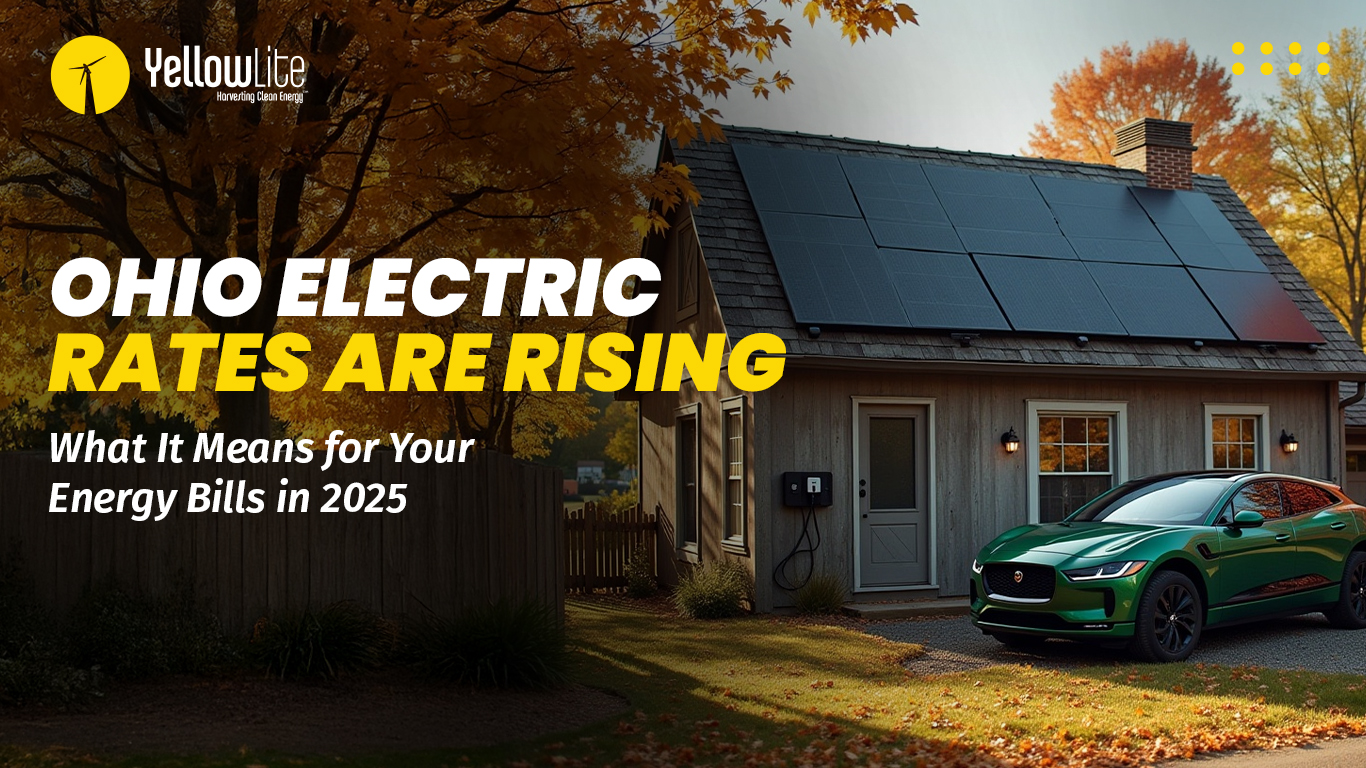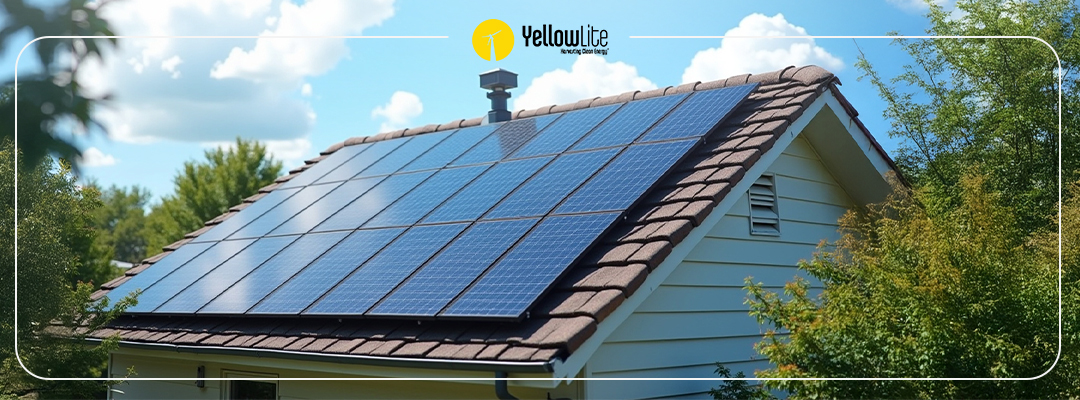All Your Questions About Solar For New Home Construction
In Ohio, integrating solar into new homes offers a sustainable and financially savvy approach right from the start. This guide will navigate the essentials of incorporating solar into your new home construction, ensuring an efficient and cost-effective solar setup.
Construction Considerations
Integrating solar into new home construction involves careful planning around several key elements:
- Home Orientation: Aim to have the home's roof primarily south-facing to maximize solar panel exposure to sunlight.
- Roof Design: Choose a roof angle between 30 and 45 degrees for optimal solar panel performance. Ensure the roof can support the additional weight of solar panels.
- Roof Material: Select materials that are conducive to solar installation. Common materials like asphalt shingles are typically suitable, while slate and clay tiles may be problematic.
- Minimize Obstructions: Design the roof to avoid vents, chimneys, and other elements that could shade solar panels and reduce their effectiveness.
- Electrical Infrastructure: Include plans for electrical conduits and connections from the roof to the electrical panel, facilitating easier and more cost-effective solar installation.
- Landscaping: Plan landscaping and construction of outbuildings with solar in mind, ensuring trees and other structures will not obstruct the solar panels as they grow.
- Local Regulations and Permits: Check local building codes and permit requirements for solar installations early in the design process to ensure compliance.
- Energy Efficiency Measures: Implement energy-efficient building practices and appliances to lower overall energy needs to ensure your solar system meets your home energy requirements
Let’s talk more about your home energy requirements.
Estimate Energy Needs to determine the size of your solar system
Work with your solar installer to determine the size of your system based on energy needs. Too large a solar system, and you’re wasting money. Too small, and you won’t be able to cover your bills.
Here’s how to do it:
Estimate Energy Usage:
- Estimate Energy Usage: By reviewing the electricity bills of homes comparable in size to yours. Consider the number of occupants, square footage, and the efficiency of your appliances. This is an excellent time to consult an expert solar installer like Yellowlite to ensure you’re on the right track.
- Annual Energy Needs:
- Multiply this monthly energy usage by 12 to get your annual energy consumption in kWh.
- Daily Energy Requirements:
- Divide your annual energy needs by 365 to determine your average daily kWh requirement.
- Calculate Required Solar Power Output:
- Given the average of 4.5 peak sunlight hours per day in your area, multiply your daily energy requirement by 4.5 to determine the total kWh of solar energy you need daily.
- Determine Individual Panel Output:
- 400-watt panels produce roughly 1.8 kWh per day (considering 4.5 hours of peak sunlight, i.e., 400 watts * 4.5 hours).
- Calculate the Number of Panels:
- Finally, divide the total kWh of solar energy per day by the kWh produced by one panel to determine the total number of panels required.
Budget for Your Installation
Budgeting for a solar installation on your new home requires a thorough understanding of the initial investment and the long-term financial benefits. Here are key considerations to ensure your solar project aligns with your financial goals:
- Financing Options: If you’re financing your home, consult your lender to determine if you can bundle the solar installation costs into your mortgage and make the upfront cost of your solar system much more affordable.
- Initial Costs: Factor in the cost of solar panels, inverters, mounting hardware, and professional installation services. Prices can vary based on the components' quality and the installation's complexity.
- Energy Savings: Consider the reduction in your monthly energy bills due to solar production. These savings should be factored into your budgeting, as they contribute to the system's payback period.
- Maintenance and Warranty: Account for potential maintenance costs and ensure your system components have robust warranties. Doing so can protect your investment and reduce unexpected expenses over the system's lifespan.
- Incentives and Rebates: Take full advantage of federal, state, and local incentives, which can significantly reduce the upfront cost of your solar system. These may include tax credits, rebates, and SREC income.
Let’s talk about those incentives and rebates.
Research Federal, State, and Local Financial Incentives
Upon researching, new homeowners will discover that Ohio offers generous financial incentives for solar energy adoption.
Here's an overview of the key incentives to consider:
- Federal Investment Tax Credit (ITC): The ITC allows homeowners to deduct 30% of the cost of installing a solar energy system from their federal taxes. It substantially reduces the overall cost of going solar.
- Solar Renewable Energy Certificates (SRECs): Ohio has a solar renewable energy credit (SREC) program, which rewards homeowners for the clean energy their solar panels produce. Each megawatt-hour of solar power generated earns homeowners a certificate, which they can sell for additional income.
- Net Metering: This policy enables you to send excess electricity from your solar panels back to the grid in exchange for utility bill credits. It is widely offered by utility companies throughout Ohio. To confirm the details, you should consult with your area's utility company and an expert solar installation company like Yellowlite.
- Local Incentives and Rebates: Beyond statewide programs, some cities and counties offer incentives to reduce the cost of solar installations further. These may include property tax exemptions, which prevent your property taxes from increasing due to the added value of solar panels, and utility-specific rebates or incentives that can lower upfront costs or provide additional financial returns on your solar investment.
Understanding and utilizing these incentives can dramatically lower your initial investment and increase the long-term returns of your solar system.
Get it right with Yellowlite
If you’re building a new home in Ohio, it’s essential to educate yourself and consult an expert solar installer.
This guide covers essential aspects of solar installation, including construction considerations like optimal home orientation and roof design and estimating your energy needs based on your unique consumption patterns. It emphasizes the importance of careful budgeting for your installation, considering initial costs, potential energy savings, and the value of tapping into various incentives and rebates to minimize upfront expenses and maximize long-term gains.
YellowLite is here to help you navigate the new home construction solar installation process, providing expert guidance tailored to your specific requirements. Our team ensures a smooth transition to solar, optimizing the efficiency and cost-effectiveness of your setup.
Contact our pro-solar experts today to start your journey toward a sustainable, solar-powered home.



